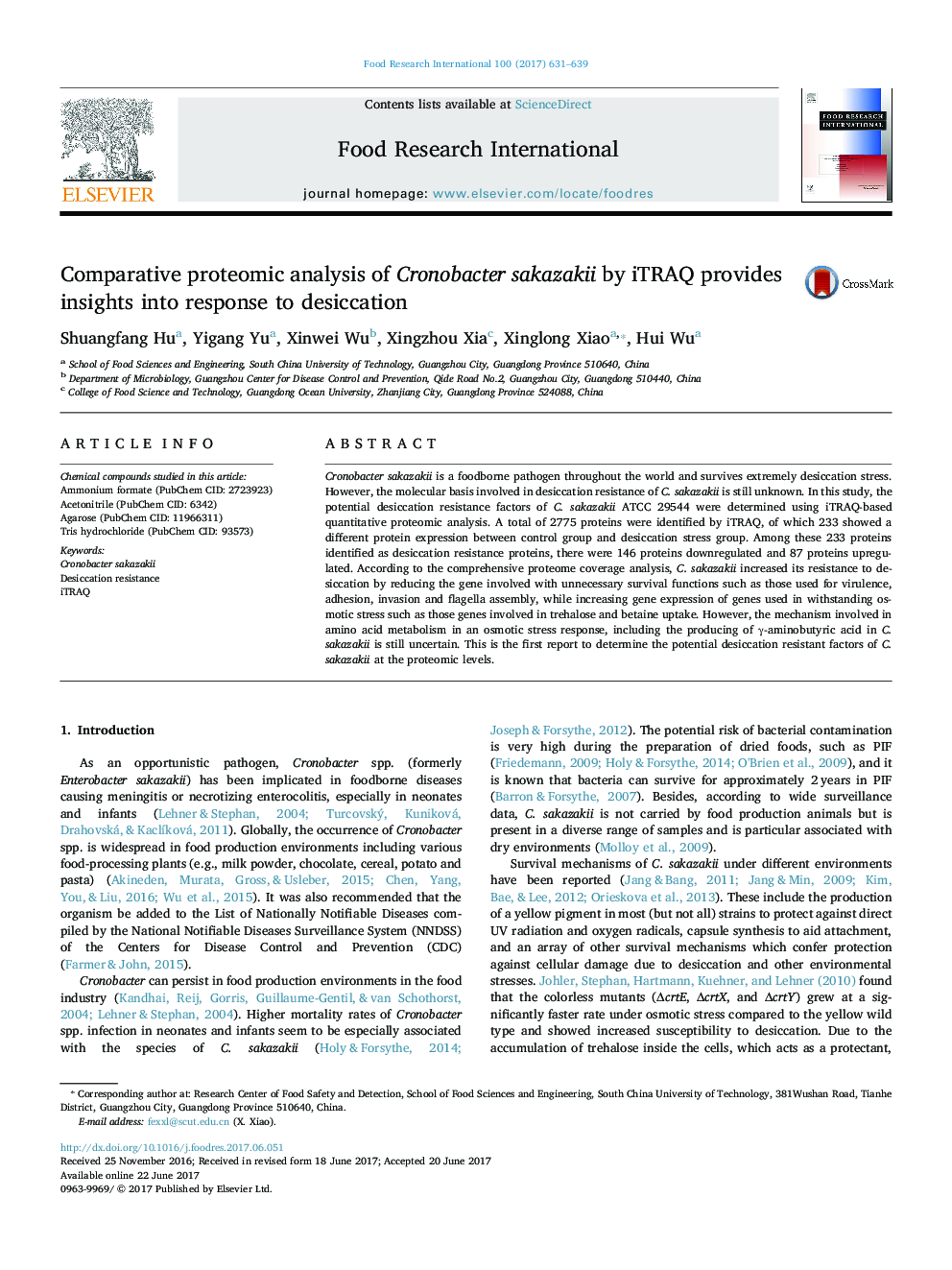| Article ID | Journal | Published Year | Pages | File Type |
|---|---|---|---|---|
| 5768016 | Food Research International | 2017 | 9 Pages |
â¢The proteomic profiles of desiccation cells were developed.â¢Gene expressions of virulence, adhesion, invasion and flagella assembly decreased.â¢ABC transporter and secretion system were activated.â¢Trehalose and betaine accumulated in desiccation cells.
Cronobacter sakazakii is a foodborne pathogen throughout the world and survives extremely desiccation stress. However, the molecular basis involved in desiccation resistance of C. sakazakii is still unknown. In this study, the potential desiccation resistance factors of C. sakazakii ATCC 29544 were determined using iTRAQ-based quantitative proteomic analysis. A total of 2775 proteins were identified by iTRAQ, of which 233 showed a different protein expression between control group and desiccation stress group. Among these 233 proteins identified as desiccation resistance proteins, there were 146 proteins downregulated and 87 proteins upregulated. According to the comprehensive proteome coverage analysis, C. sakazakii increased its resistance to desiccation by reducing the gene involved with unnecessary survival functions such as those used for virulence, adhesion, invasion and flagella assembly, while increasing gene expression of genes used in withstanding osmotic stress such as those genes involved in trehalose and betaine uptake. However, the mechanism involved in amino acid metabolism in an osmotic stress response, including the producing of γ-aminobutyric acid in C. sakazakii is still uncertain. This is the first report to determine the potential desiccation resistant factors of C. sakazakii at the proteomic levels.
Graphical abstractDownload high-res image (137KB)Download full-size image
